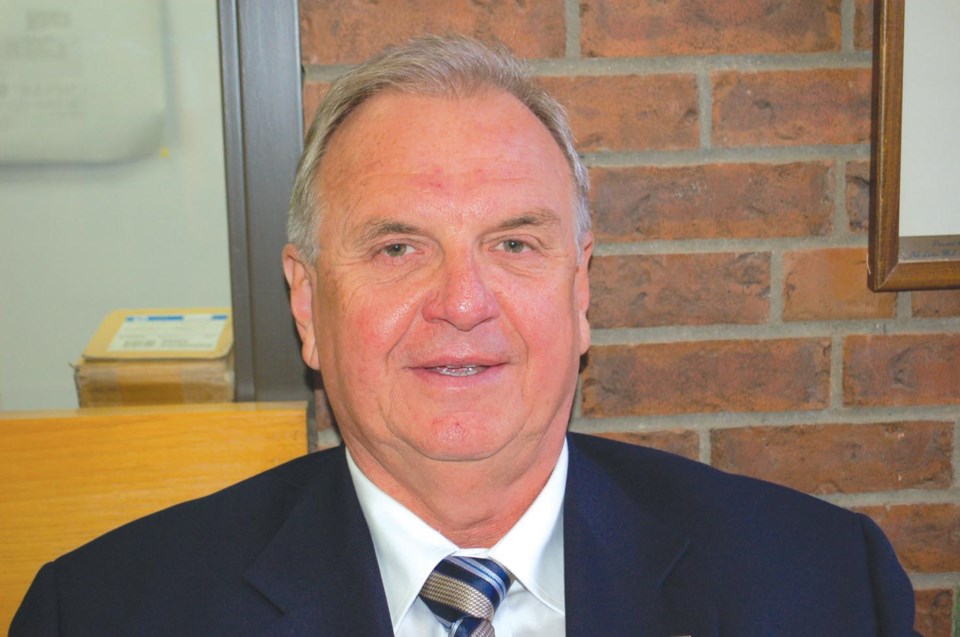The Southeast Saskatchewan Airshed Association is moving ahead with significant and signature steps being taken within the past 12 months.
The group with a board of directors featuring representatives from the general populace as well as government agencies and the local industrial complex got together on May 26 in Estevan for its annual general meeting in the conference room at City Hall.
Terry Gibson, the association's executive director, welcomed the 13 board members who were in attendance for the working session as well as a half-hour annual general meeting that included acceptance of the audited financial statements for the previous year.
"We try to hold the AGM just prior to Clean Air Day that is June 4 this year," said Gibson.
The group was pleased to report the acquisition and deployment of four new air pointers, or air monitoring systems in the southeast area of the province, giving them six air pointers of their own in the southeast sector.
"It was a good year. We received a $200,000 grant from Western Economic Diversification that allowed us to purchase the four new air monitors," he said.
They are now set up in sectors where known air quality activities occur such as Weyburn, Glen Ewen, Wauchope, Stoughton and Esterhazy. SaskPower also lends its air quality monitoring information for the region in and around Estevan.
The air pointers record levels of SO2, H2S, NO/NO2, PM and O3. The southeast sector covers 36,800 square kilometres and includes 45 rural and urban municipalities.
The local air shed has been in operation since 2005 and long-term trends in air quality movement are being noted, and a lot of it is positive, said board members as Canada is improving its record in terms of improving fuel quality, oilpatch flaring regulations, and general power generating systems, but it was also noted that something like a bad forest fire, will quickly compromise an improving environmental record.
"Of course, we'd like to see more community engagement beyond the oil and gas industries. The air belongs to all of us," said Gibson. "Activities like more bike riding and less vehicle riding, building healthy neighbourhoods, getting involved. Our overarching goal is to raise awareness of air quality so we can better understand how to improve it, and that includes the little things like less idling of trucks and cars."
Gibson said he understood the monitoring of oilfield activities is difficult since it is an industry with constantly moving targets, but improvements are steadily being observed with each passing year.
The work and monitoring in the southeast is not going unnoticed since similar organizations are now being established in the north where the Boreal Airshed Association is just nicely getting underway as are air shed monitoring systems in the southwest and northeast regions of the province.
"The southeast was the first in Saskatchewan, and we followed an Alberta model," said Gibson.
A recent outbreak of foul-smelling lagoon wastes in Estevan, however, are not part of the air shed's mandate.
"Unfortunately no," said Gibson with a smile. "We don't measure aromas, but we all agree they are nuisances that are well worth discussing."
Holland Thompson was elected board chairman and a couple of resignations from the board membership were acknowledged during the annual meeting that received the audited report from Daryl Donovan, representing the accounting firm of MNP who performed the annual audit of the association that conducted business within a budget of $302,000 this past year. Donovan noted that there was a steady increase in expenses, as would be expected with a growing organization such as SESAA.
Gibson went on to say later that in some areas, noxious substances in the air exceeded generally accepted levels, but in the vast majority of the monitoring reports, the air quality standards were being met.
"We are encouraging municipal councils to get engaged. We have some members on the board now. We would like them to take steps such as installation of street lighting timers, more park space, more trees, more activities for pedestrian movement, all those things."
The executive director said that the board of directors in the southeast works very well, even though the members come from sectors that don't always see eye-to-eye on certain environmental levels.
"We have a board that is not at cross purposes. They all see the need to protect the environment. Industry believes that, our municipal and provincial government believes that, as does our business community and regular citizens."
Gibson said the southeast group would like to set up a few more air pointers in the region in the future, but for now, the six, plus the SaskPower system, are providing very credible data for public consumption.




